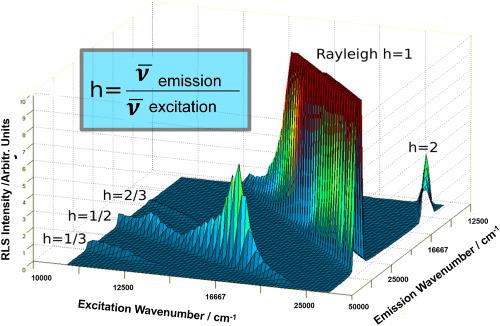当前位置:
X-MOL 学术
›
J. Raman Spectrosc.
›
论文详情
Our official English website, www.x-mol.net, welcomes your
feedback! (Note: you will need to create a separate account there.)
A sensitive resonance Rayleigh scattering sensor for dopamine in urine using upconversion nanoparticles
Journal of Raman Spectroscopy ( IF 2.4 ) Pub Date : 2019-12-08 , DOI: 10.1002/jrs.5800 José Antonio Murillo Pulgarín 1 , Aurelia Alañón Molina 1 , Elisa Jiménez García 1 , Lucía García Gómez 1
Journal of Raman Spectroscopy ( IF 2.4 ) Pub Date : 2019-12-08 , DOI: 10.1002/jrs.5800 José Antonio Murillo Pulgarín 1 , Aurelia Alañón Molina 1 , Elisa Jiménez García 1 , Lucía García Gómez 1
Affiliation

|
A highly sensitive resonance light scattering method for detecting dopamine in urine was developed by using a novel probe based on lanthanide‐doped upconversion nanoparticles (UCNPs) linked to dopamine–quinone (DQ) by hydrogen bonding and electrostatic interactions. Adding dopamine to a solution containing UCNPs decreases their size and the intensity of their resonance light scattering signals. Based on the decrease, dopamine can be determined in Tris–HCl buffer and in urine samples spiked with analyte concentrations over the range 0–300 μM with a limit of detection of 1.62 μM. As‐prepared UD can thus provide an effective platform for biosensor development, drug discovery, and rapid diagnosis of Parkinson's and Alzheimer's disease, among other medical conditions.
中文翻译:

使用上转换纳米颗粒的尿液中多巴胺的敏感共振瑞利散射传感器
通过使用一种新型探针开发了一种高灵敏度的共振光散射方法,用于检测尿液中的多巴胺,该探针基于通过氢键和静电相互作用与多巴胺-醌(DQ)连接的镧系元素掺杂的上转换纳米粒子(UCNP)。将多巴胺添加到含有UCNP的溶液中会减小它们的大小和其共振光散射信号的强度。基于减少量,可以在Tris–HCl缓冲液和尿液样品中测定多巴胺,加标的分析物浓度在0–300μM范围内,检出限为1.62μM。因此,准备好的UD可以为生物传感器开发,药物发现以及帕金森氏病和阿尔茨海默氏病以及其他医学疾病的快速诊断提供有效的平台。
更新日期:2019-12-08
中文翻译:

使用上转换纳米颗粒的尿液中多巴胺的敏感共振瑞利散射传感器
通过使用一种新型探针开发了一种高灵敏度的共振光散射方法,用于检测尿液中的多巴胺,该探针基于通过氢键和静电相互作用与多巴胺-醌(DQ)连接的镧系元素掺杂的上转换纳米粒子(UCNP)。将多巴胺添加到含有UCNP的溶液中会减小它们的大小和其共振光散射信号的强度。基于减少量,可以在Tris–HCl缓冲液和尿液样品中测定多巴胺,加标的分析物浓度在0–300μM范围内,检出限为1.62μM。因此,准备好的UD可以为生物传感器开发,药物发现以及帕金森氏病和阿尔茨海默氏病以及其他医学疾病的快速诊断提供有效的平台。









































 京公网安备 11010802027423号
京公网安备 11010802027423号